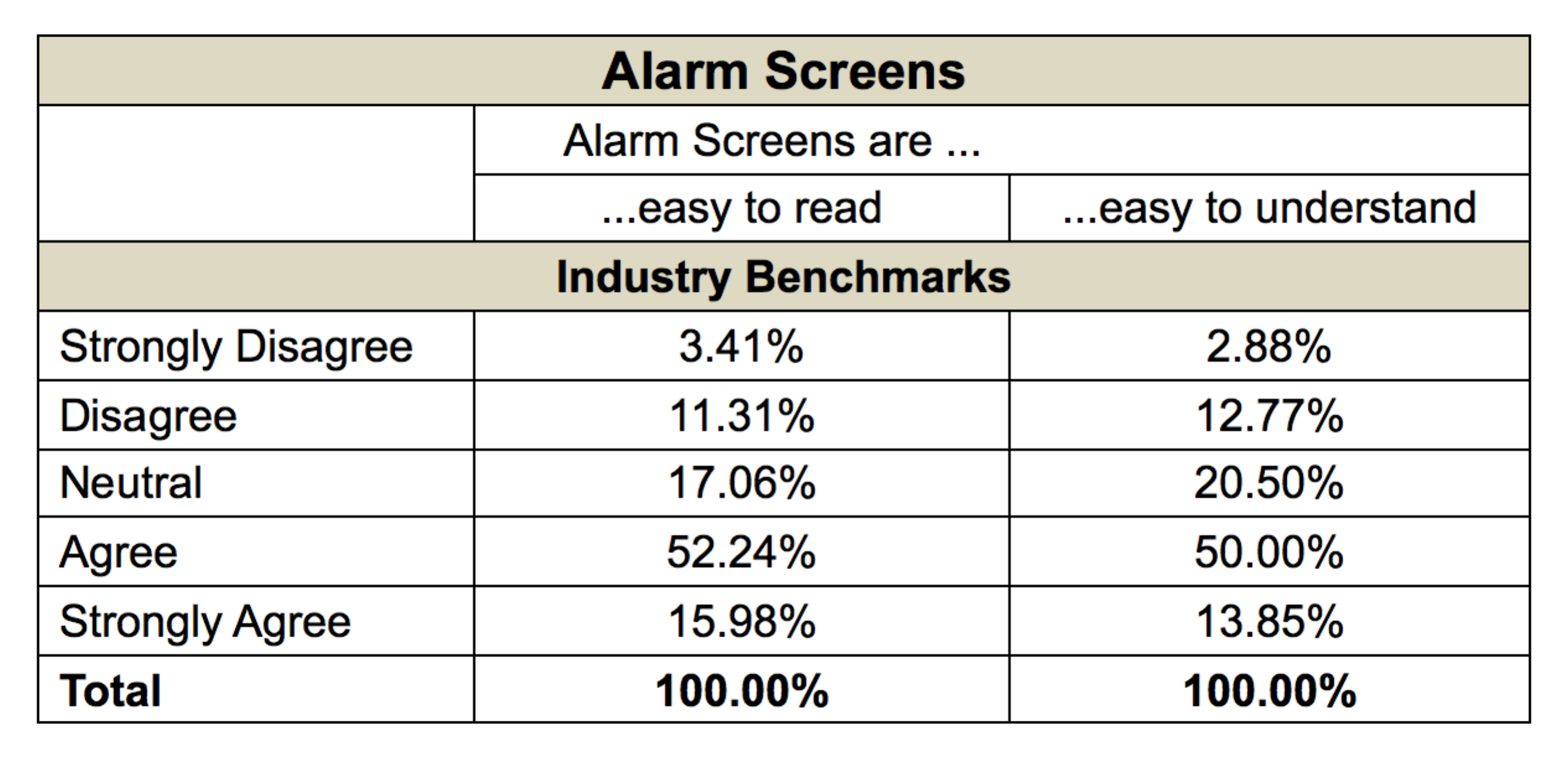Alarm Management Plan Effectiveness
Do you have an alarm management plan? If so, have you determined its effectiveness this calendar year through a review? That is what this Control Room Management (CRM) rule statement requires:
(4) Review the alarm management plan required by this paragraph at least once each calendar year, but at intervals not exceeding 15 months, to determine the effectiveness of the plan;
What are you measuring to determine effectiveness? Let’s start with some easy questions about what needs to be in the written plan, based on the CRM rule statements:
- Do you have a written alarm management plan that outlines methods so that controllers can effectively respond to alarms?
- Does the alarm management plan include a process for ensuring that alarms are accurate?
- Does the alarm management plan include a monthly review of points taken off scan, inhibited alarms, false alarms, or that have forced or manual values?
- Does the alarm management plan include methods for verification of safety-related alarm set-point values and alarm descriptions?
- Does the alarm management plan include a method of monitoring the content and volume of general activity of each controller to assure that each controller has time to respond to alarms?
You might be surprised to learn that many written alarm management plans we have reviewed since 2009 did not even address those items. Some companies bought a generic alarm philosophy and said it was their alarm management plan. Other plans contained snippets from ISA 18.2 and/or API Recommended Practice 1167, but did not address the basic CRM rule requirements.
The initial measure of effectiveness is whether or not your written alarm management plan addresses the basic CRM rule requirements. While it should be based on industry best practices, it has to contain company-specific methods and processes that fit your SCADA system and its alarm mechanisms.
Once your plan is effectively written to address the rule requirements and to fit your SCADA system, there are Key Performance Indicators to use, as outlined in ISA 18.2 or API RP 1167.
Do you know and are you using the target values for these items?
- Annunciated alarms per day, per hour, per 10 minutes
- Percentage of hours containing more than 30 alarms
- Percentage of 10-minute periods containing more than 5 alarms
- Maximum number of alarms in a 10-minute period
- Percentage contribution of the top 10 most frequent alarms to the overall alarm load
- Quantity of nuisance alarms, including chattering and fleeting alarms
- Stale alarms
- Annunciated or configured priority distribution
- Unauthorized alarm suppression
- Improper alarm attribute change
A second measure of effectiveness is whether or not your alarm management plan achieves the Key Performance Indicators.
Remember that the stated purpose of this section of the CRM rule is to “provide for effective controller response to alarms.” Here is a novel way to measure the effectiveness of an alarm management plan:
Ask the controllers!
We have developed survey/interview questions for our clients that can be used for online surveys or in interviews about effectiveness from the controllers’ viewpoints. An abbreviated example and results from the survey we use as part of our workload assessment method are in the table below. The questions we use in the annual review are more specific.

Measures of effectiveness for the alarm management plan should include quantitative and qualitative measures. Develop measures of how the processes work as well as the outcomes. Don’t just rely on the numbers.




